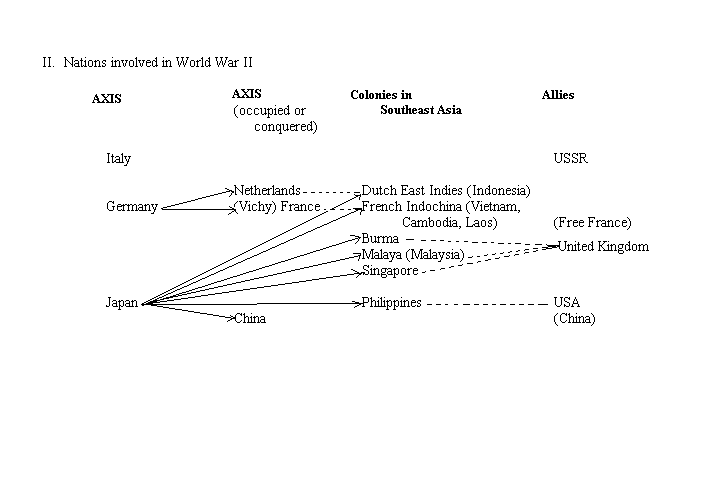| Japan into China Germany into eastern and western Europe
Rising Southeast Asian nationalism
Decreasing Western interest in Asian
colonies |
Japanese cultural
and economic expansion Fall
of France June |
Japan into FIC
Pearl Harbor December 7 and other attacks |
Japan defeats
UK-Singapore Philippines
show greatest resistance to Japan
Japan welcomed in Indonesia
Japan and Thailand Alliance |
August – A bombs |
